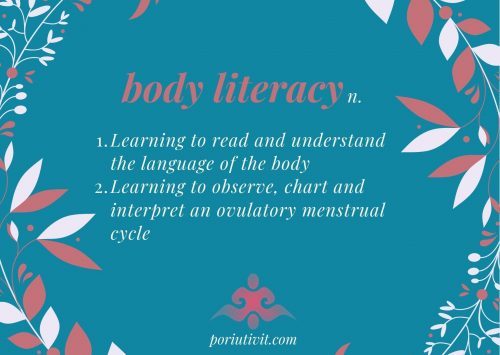The capacity to trust ourselves and our bodies is not a common or shared goal in western society. In 2005, the term “Body Literacy” was coined by three women: Laura Wershler, Geraldine Matus, and Megan Lalonde.
 Body Literacy is the foundation for practicing fertility awareness. It refers to a core group of skills and competencies (cognitive, emotional, and intuitive) which enable an individual to navigate their well-being on a continuum which marks the experience of health and wellness on one end and illness and dis-ease on the other.
Body Literacy is the foundation for practicing fertility awareness. It refers to a core group of skills and competencies (cognitive, emotional, and intuitive) which enable an individual to navigate their well-being on a continuum which marks the experience of health and wellness on one end and illness and dis-ease on the other.
Body literacy fuses the physical, mental, emotional and spiritual into a united whole. Health knowledge is multi-layered. It is external, objective and scientific and it is also internal, subjective and personal. When we integrate these aspects into a working whole, we gain new freedom and perspective for understanding how we create health and wellness in everyday life and choose the personal tools and resources for achieving health and healing in our lives.
To my understanding, the concept can be translated into many levels of meaning:
We are all summoned to ask ourselves to what extent are we committed to using body literacy for the purpose of promoting our health, well being and quality of life.
“Ve’nishmartem Me’od Lenafshoteichem”
Accreditation recognized by The Association of Fertility Awareness Professionals

* All illustrated characters are taken from “The Monthly Cycle,” a short film by Ada Ramon and Ofek Shamir.
Quick Links
The information presented on the site is for educational purposes only and is not intended to replace medical advice from a qualified doctor or other health professional. For convenience, the information is written in the feminine form, but refers to anyone born with a uterus and ovaries, including those who do not identify as women
Contact Me
Join Our Newsletter